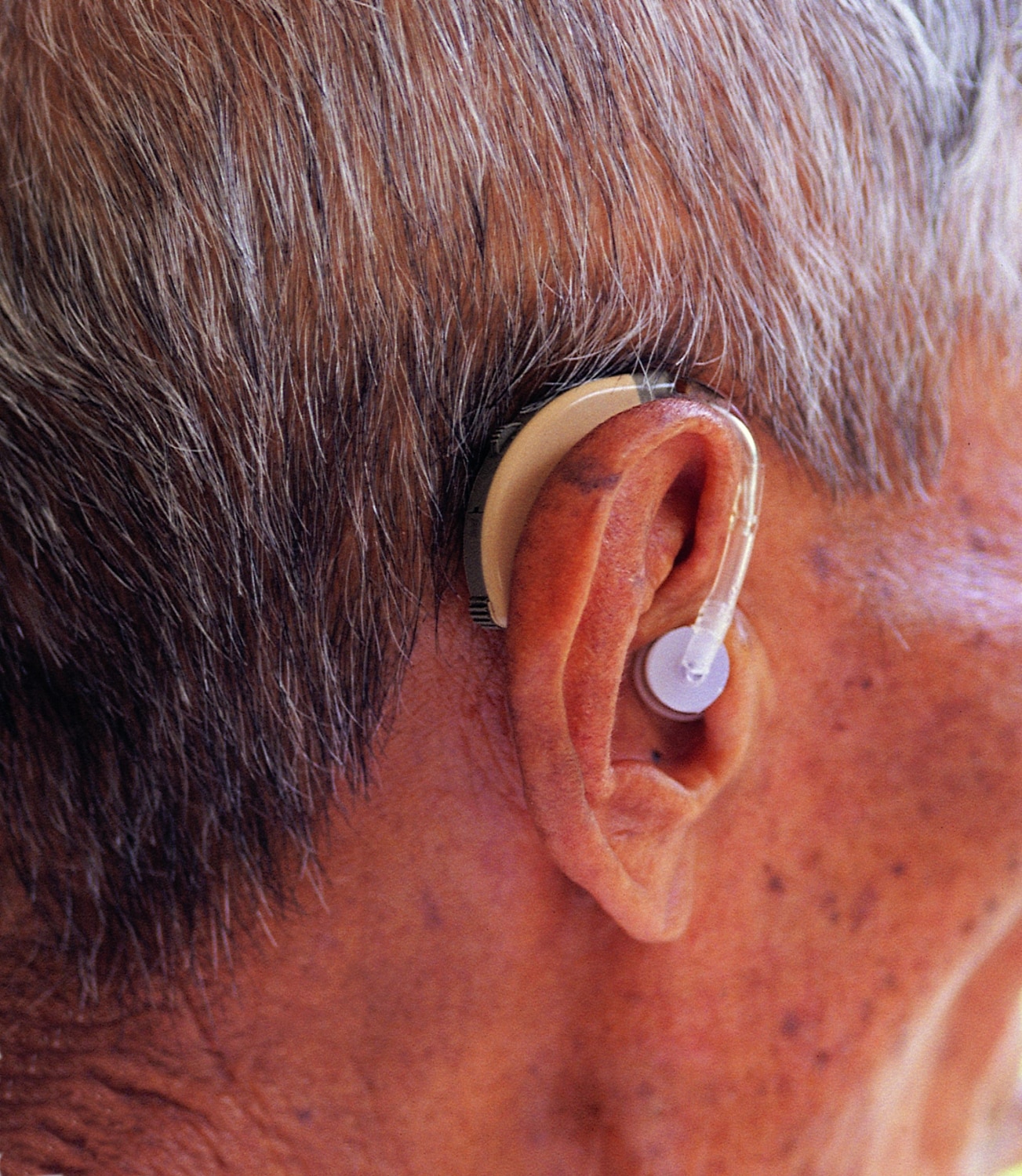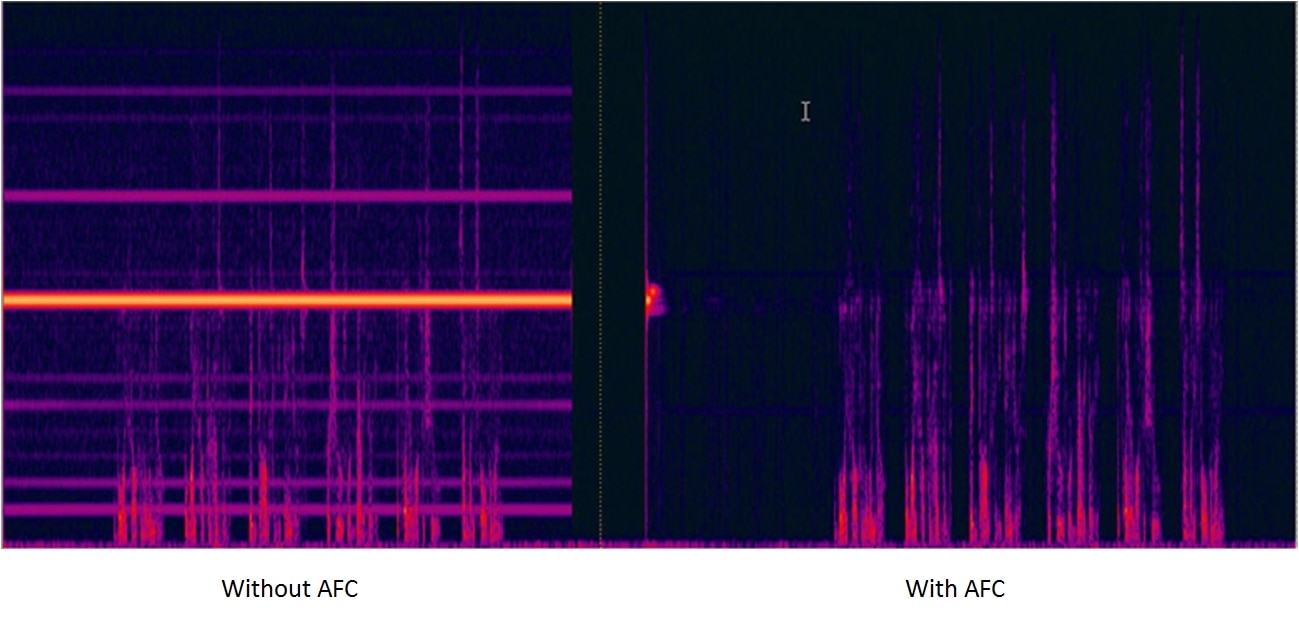助听器的反馈,旁观者可以听到的响亮而恼人的啸叫声,一直是助听器佩戴者面临的最麻烦的问题之一。
当使用模拟集成
电路制作助听器时,即使在数字化的早期阶段,也必须通过降低助听器的总体增益(限制配合率)或通过插入来调整设备的频率响应来管理反馈。
反馈频率的陷波滤波器,以减少该区域的增益。
不幸的是,这也具有降低助听器磨损想要听到的声音频率的增益的不利影响。
现在,自适应反馈消除(AFC)已成为数字助听器中无处不在的特性。
AFC通过从麦克风信号中减去助听器反馈信号的估计来操作。
如果反馈估计与麦克风拾取的实际反馈相匹配,则消除反馈。
这种反馈抑制方法优于其他方法,因为与没有AFC的情况相比,它实际上消除了反馈并允许增益增加。
正确的AFC操作取决于与助听器中存在的实际反馈路径匹配的内部估计。
不幸的是,助听器反馈路径并不是一成不变的。
由于诸如换能器选择,声管,耳模式等因素,不同助听器的反馈路径存在显着差异。此外,由于用户移动和环境,特定助听器的反馈路径也可能随时间而变化。
变化。
如果此类更改未反映在内部反馈路径中,则取消器性能将显着降低。
为了保持最佳的消除性能,AFC执行内部反馈路径模型的连续调整。
这些调整自动发生并利用现有的助听器信号。
无需用户干预或特殊探测信号,从而最大限度地减少助听器佩戴者的干扰。
为了快速消除反馈,需要快速进行AFC调整。
快速调整可以对内部反馈模型进行大幅,快速的更改,从而可以快速消除反馈。
不幸的是,快速调整也会导致模型中的错误,从而导致称为夹带的可听失真。
通过缓慢调整可以减少夹带,但是消除反馈将需要更多时间。
安森美
半导体以前的AFC设计代表了快速和慢速调整之间的折衷。
折衷设置可保持出色的音频质量,同时可快速消除反馈。
但是,由于用户调整不可用,这并不是所有情况下的最佳选择。
安森美半导体的RHYTHM™R3920中提供的AFC算法使用新的换档机制解决了这个问题,该机制提供了特定于存储器的自适应速度调节。
这一新功能可以更快地消除反馈,并具有出色的音频质量,并可灵活调整各种条件下的AFC行为。
安森美半导体的听力健康团队将在2015年的听力学现场进行现场演示!
圣安东尼奥会议(3月25日至27日)。
我们的摊位(191)停下来与我们的众多音频专家交谈。
以上来自于谷歌翻译
以下为原文
Feedback in hearing aids, the loud and annoying howling sound that can be heard by bystanders, has always been one of the most bothersome issues faced by hearing aid wearers. Back when hearing aids were made with analog integrated circuits, and even in the early days of digital, feedback had to be managed by lowering the overall gain of the hearing aid (limi
ting fit rates) or by adjusting the frequency response of the device by inserting a notch filter at the feedback frequency to reduce the gain in that area. Unfortunately, this had the detrimental effect of also lowering the gain in those frequencies of the sounds the hearing aid wear wanted to hear.

Now, Adaptive Feedback Cancellation (AFC) has become a ubiquitous feature in digital hearing aids. AFC operates by subtracting an estimate of the hearing-aid feedback signal from the microphone signal. If the feedback estimate matches the actual feedback picked up by the microphone, the feedback is eliminated. This approach to feedback suppression is preferred over other methods because it actually eliminates feedback and permits an increase in gain compared to that possible without AFC.

Correct AFC operation depends on the internal estimate matching the actual feedback paths present in the hearing aid. Unfortunately, hearing-aid feedback paths are not constant. There is significant variability in the feedback paths of different hearing aids due to factors such as transducer selection, acoustic tubing, ear mold styles, etc. Furthermore, the feedback path of a specific hearing aid can also change with time due to user movements and environmental changes. If such changes are not reflected in the internal feedback path, then canceller performance will be significantly degraded.
To maintain optimal cancellation performance, AFC performs continuous adjustments of the internal feedback-path model. These adjustments occur automatically and utilize the existing hearing aid signals. No user intervention or special probe signals are required, thus minimizing disruption for the hearing-aid wearer.
To eliminate feedback quickly, fast AFC adjustments are required. Fast adjustments make large, rapid changes to the internal feedback model allowing feedback to be eliminated quickly. Unfortunately, fast adjustments can also lead to errors in the model resulting in audible distortion known as entrainment. Entrainment can be reduced with slow adjustments but eliminating feedback will require more time.
Previous AFC designs from ON Semiconductor represent a compromise between fast and slow adjustments. The compromise setting maintains excellent audio quality while allowing for quick feedback elimination. But, since user adjustments were not available, this did not represent the best choice for all situations.
The AFC algorithm provided in RHYTHM™ R3920 from ON Semiconductor solves this problem using a new gear-shifting mechanism that provides memory-specific adaptation-speed adjustments. This new feature allows faster feedback elimination with excellent audio quality and provides the flexibility to tune AFC behavior for wide range of conditions.
ON Semiconductor’s hearing health team will be on-site at the 2015 Audiology NOW! conference in San Antonio (March 25-27th). Stop by our booth (191) to speak with one of our many audio experts.




